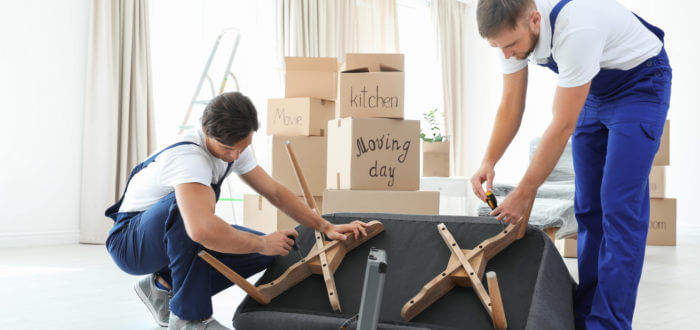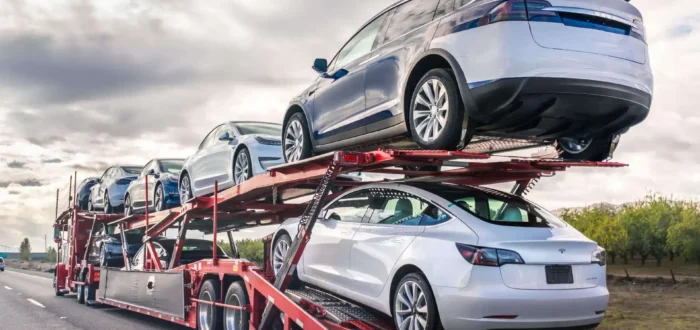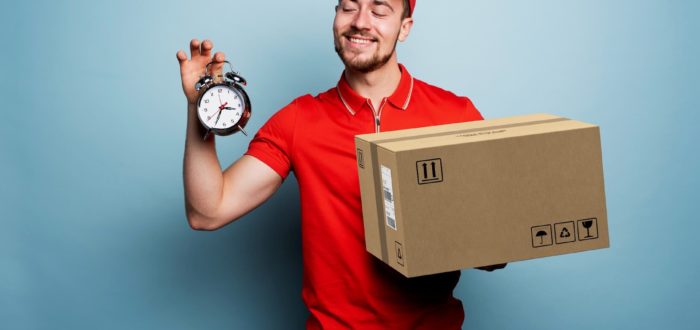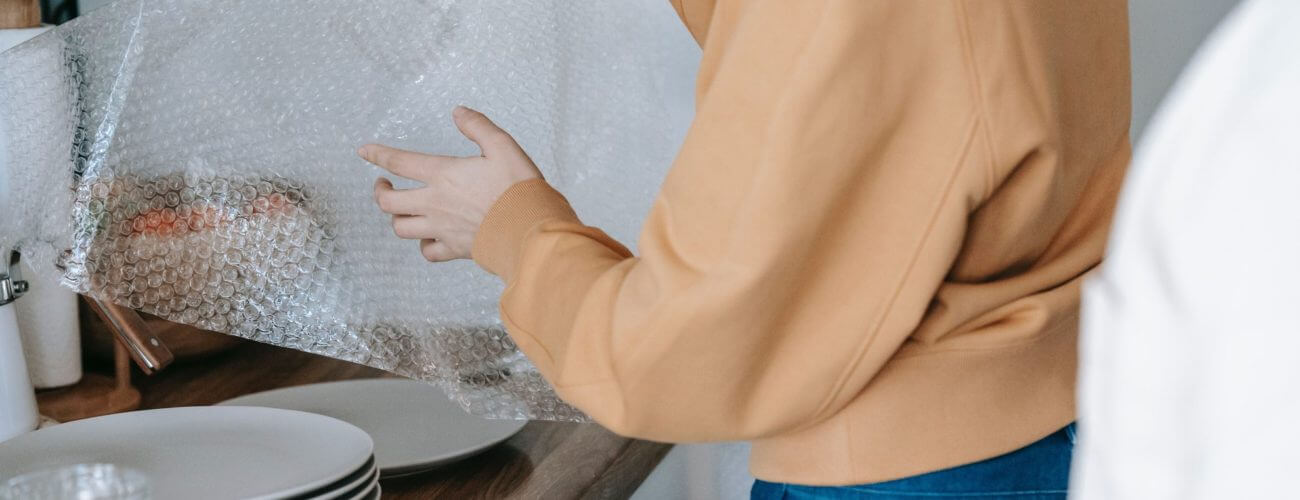

How to Use Bubble Wrap When Packing for a Move
Posted in How-to,Planning the Move on December 26, 2022
Packing is an inevitable part of every move, and naturally, there are many questions you need to answer before you can even start protecting all your stuff. For starters, you should learn how to use bubble wrap and ensure your belongings are completely safe during the transport and will arrive at your new home without a scratch and undamaged.
When using bubble wrap, the most important thing to remember is that the bubbles need to be facing the object. Lay the material on a flat surface, place the item you wish to wrap on it, and roll the sheet from one side to the other until the item is completely covered from all sides. Applying a few pieces of duct tape on strategic places will keep the whole thing from unraveling. Once you’re done, contact Cross Country Movers so our team can safely pack and move your wrapped belongings.
Interesting Origins of Bubble Wrap
Bubble wrap was invented in 1957 by engineers Alfred Fielding and Marc Chavannes, who initially intended it to be a textured wallpaper. They sealed two shower curtains together, creating air bubbles between them. When the wallpaper idea didn’t take off, they repurposed it as greenhouse insulation before realizing its potential as a packaging material.
A few years later, in 1961, bubble wrap found its true purpose when IBM used it to protect their newly launched 1401 computer during shipping. This marked the beginning of its widespread use as a protective packaging material. Today, bubble wrap is manufactured in a variety of sizes and types, catering to industries ranging from e-commerce and electronics to fine art and collectibles.
When to Use Bubble Wrap?
One of the best relocation hacks for reliable shipping protection for fragile objects is using bubble wrap. Its use has a lot of benefits. Besides not having to worry about your belongings getting broken during transport, using protective packaging materials will ultimately save you time and money, as you won’t have to deal with buying new stuff after moving across the country.
Think about the protection level your things require and the packaging you are currently using before deciding whether or not to use bubble wrap. However, know one thing – when it comes to packing, this material will definitely be your best friend, no matter if you’re using basic cross-country moving services or the best packing service out there.
Why Using This Material Will Ease the Packing Process?
Bubble wrap is one of the simplest packing materials to utilize and the best option for shipping something breakable or for items that simply need additional protection from scratches or bumps. Anything bulky, pricey, or fragile can benefit from a layer of bubble wrap.
It can simply be wrapped around the item and taped down. Due to its flexibility, it can be wrapped snugly around practically any object, regardless of how oddly shaped it may be. This means you won’t have to rethink the reasons to move some objects just because you weren’t sure how to protect them.
Bubble wrap is a form of protection made of two plastic sheets that have been bonded together. Even if objects fall to the ground, it can save them from breaking, chipping, or scratching. It also keeps moisture, grime, and dust out.
Since this material is weightless – it is formed of air, and your boxes will barely gain any weight from it – the boxes will be simpler to lift, decreasing the possibility that you’ll hurt your back when relocating. Also, keep in mind it’s also reusable and great for your relocation budget if you’re planning on long-distance moving once more.
What Is the Right Kind You Should Get?
There are various sheet widths, lengths, and bubble sizes available for bubble wrap. Although they offer less protection, smaller bubbles can nevertheless fit inside smaller enclosures. The most protection is offered by the bigger bubbles, so ensure you have this variant on your checklist.
Long or oddly shaped goods are well protected by bubble wrap tubing. Corner protectors are a fantastic way to send frames, mirrors, and other items with corners that can dent in transit. Consider using anti-static bubble wrap whenever you are transporting electronics of any type, as chips in electronic devices can be harmed by the wrap’s static electricity.
What Is the Right Side of the Bubble Wrap for Packing
When using bubble wrap, be sure the bubbles are touching the object you are wrapping and facing inward. This not only provides greater padding but also lessens the possibility of the bubbles breaking during the transfer. In addition, the bubble-textured surface of the wrap holds the object and secures it. It can also be taped more easily and is more convenient to write on when the flat side is exposed.
Where to Get Bubble Wrap for Moving Cross Country
You can get rolls of various widths, anti-static paper, and other supplies online or in real hardware stores. However, if you seek more affordable packing supplies, visit the Craigslist website. There you can find all kinds of these materials and not go over your already tight budget (we all know how relocations can be expensive, so trying to save as much as you can is always a good thing to do).
Another option you have is to check with your family and friends whether they have this wrapping material they don’t need. In fact, you definitely should do it if you know a relative has recently moved, as they probably have some unused supplies. So, why waste perfectly good bubble wrap you could use, right? Also, if you’re looking to save money to move, the great news is that you can reuse the bubbles over and over again as long as they’re mostly undamaged and the sheet isn’t torn.
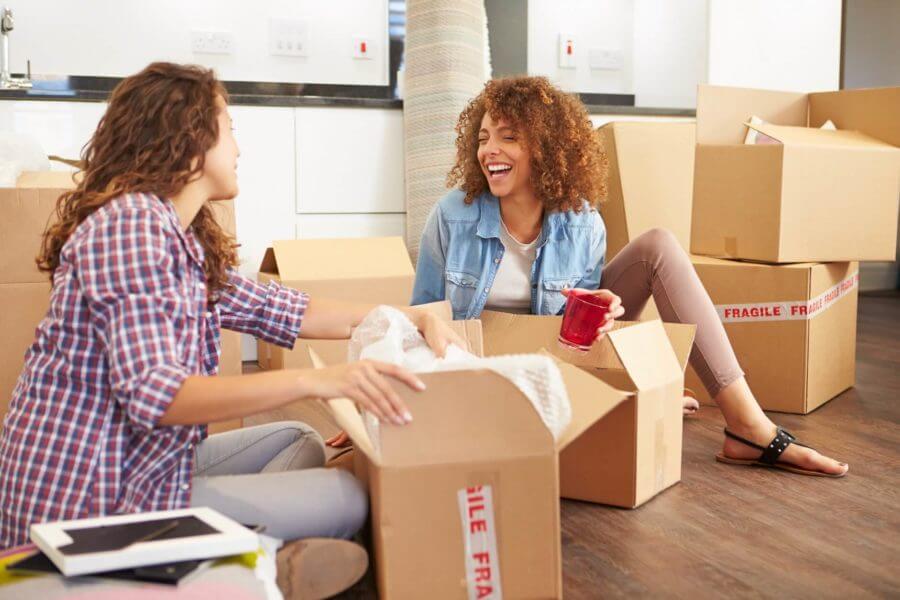
Create an Inventory Before Moving Across the Country
Make a household inventory of things you’ll be shipping, their sizes, and the level of protection they require in order to browse through the possibilities and choose the appropriate bubble wrap. When you’re organizing packing to move, be sure to get some boxing-up tips as well that can help you secure items with irregular shapes as well as breakables like china and glassware.
How to Use Bubble Wrap?
Bubble wrap has demonstrated remarkable protective abilities. In 2000, an 815-pound pumpkin nicknamed “Gourdzilla” survived a 35-foot fall completely intact when it landed on a pile of bubble wrap. So, for delicate and fragile goods that require a non-abrasive protection solution, bubble wrap is the perfect solution – all professional cross-country movers will suggest that and share this info as one of the most useful relocation tips.
Once you have obtained the appropriate bubble wrap for them, it is now time to wrap your things. The way you package your goods is a crucial step in the process. Even with the right materials, maximum protection cannot be guaranteed.
Fun fact – the largest sheet of bubble wrap ever created measured 6,081.44 square feet, earning a Guinness World Record in 2015.
The Best Wrapping Techniques
Although there are several wrapping techniques, the same fundamental ideas still hold true. Use all required supplies, cover the needed surfaces, and secure firmly. So, here are some tips on how to properly wrap your belongings with bubble wrap:
- Put the wrap on a flat surface – Ensure you have a dry, flat, and uncluttered area to work on before you begin. Make a lot of room to spread the bubble wrap sheets out.
- Place the bubble side of the wrap – There are two sides to bubble wrap: a flat side and a side with bubbles. The bubbles should face your products when you are wrapping them, which is one of the most crucial things to keep in mind.
- The bubbles’ rough surface grabs the objects more effectively – This prevents your goods from moving during transit. The flat side should be on the exterior if the package is properly wrapped, preventing the box from popping the bubbles.
- Pick a wrapping technique – You have a choice between two wrapping techniques. The “burrito” approach comes first. Put the object in the bubble wrap sheet’s corner or on one of its sides. Then, create a cylindrical or “burrito” shape by rolling the object in the bubble wrap. Instead of rolling, the second technique utilizes folding. To cover the item, bend the bubble wrap in half from both sides.
- Don’t skimp on the bubble wrap – For protection, more is preferable to less. Make sure everything is completely wrapped, and you might want to add one or two more layers. Your item’s surface is protected from scratches by a single layer, but many layers also provide defense against drops and bumps.
- Apply tape – If necessary, secure the material around your object using tape. This keeps the wrap from unrolling or falling off during transit.
- Use additional materials – Bubble wrap alone is insufficient to safeguard your goods. However, it is still crucial to package items in a strong, suitable-sized box. Fill any empty places in your objects, such as the glass, with packing paper. If necessary, use foam to cushion goods, then place packing peanuts into any empty spots in the box.
Bubble wrap can be easily cut with scissors. Avoid attempting to tear off bubble wrap with your hands if you have to remove it from something for any reason. The item might get damaged if you do this, or you might drop it. Instead, carefully cut and detach the wrap using scissors.
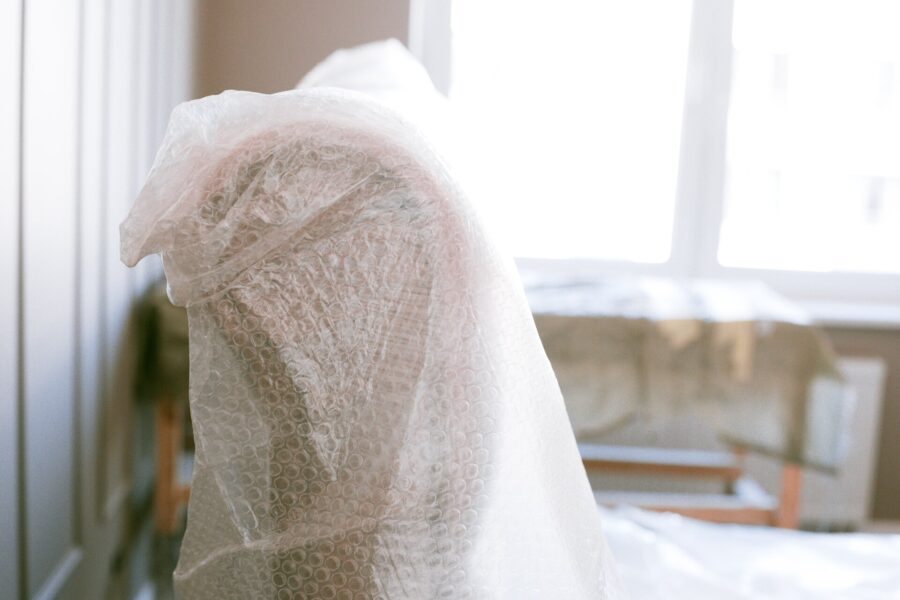
Learn How to Wrap a Picture Frame and Take Care of Oddly Shaped Items
It is difficult to ship objects of irregular shapes and sizes. Simply rolling up the products you’re transporting in a single sheet of bubble wrap might not work if they are of uneven sizes. Instead, target the sections of the item that could be vulnerable with distinct layers of wrap.
Start by padding the item’s weakest point. This could be a glass stem, an instrument neck, or a piece of glass, depending on the item. Make sure it receives an additional layer of protection, no matter what part it is. After that, cover the entire thing in bubble wrap.
If you’re wondering how to wrap a picture frame, mirror, or similar objects, this type of sectional wrapping will still protect each item’s weakest areas from damage during transport.
Fine China and Glassware Should Be Extra Protected With the Bubble Wrap Before the Cross-Country Movers Arrive
Bubble wrap is also necessary for protecting kitchen items that require extra care. When wrapping china or even boxing up dishes in general, a single sheet of packing paper is insufficient. Get the smaller bubble wrap and cover each delicate object with it after wrapping it with paper first. After that, tape everything in place and lay the plates in the box on their sides rather than stacking them.
Since the wine glasses are made of very thin stems and are quite delicate, you should first tend to the stems. Wrap each one in a wrap along the length of the stem. After that, tape the wine glass’s shielded stem and place a layer of protection paper within the bowl. The last step is to cover the entire glass with a second layer of protective paper.
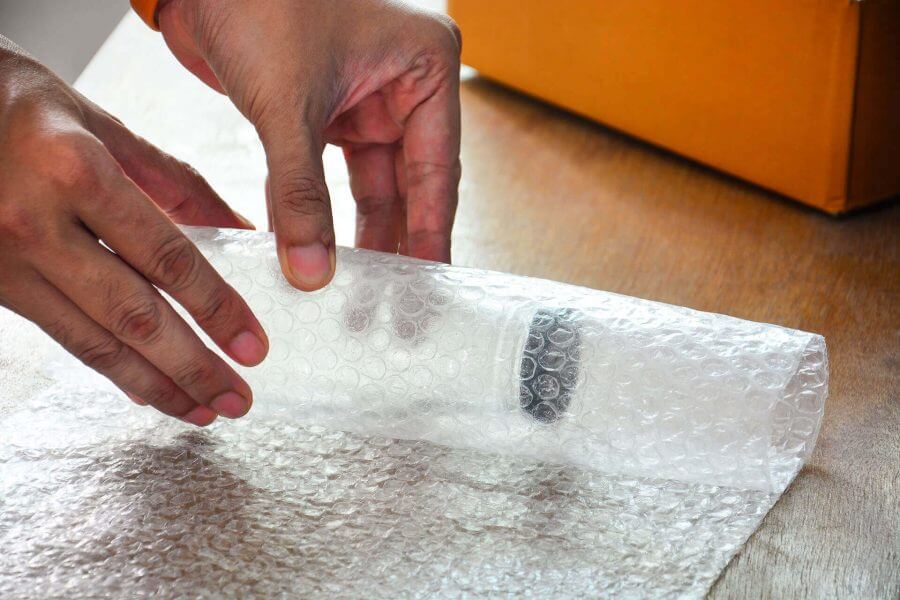
Hire Long-Distance Movers and Protect Your Belongings in the Best Possible Way
When used appropriately, bubble wrap makes an excellent packaging tool. Using this material assures your belongings are secure, whether you are transporting fragile, bulky, or expensive items or simply want a little more protection.
But, all this work could be just too overwhelming for some people, and that’s why hiring professionals such as Cross Country Movers could be the best solution. Not only will our team take care of every aspect of the move, but you won’t have to worry about whether your possessions are correctly protected, and you can actually enjoy the move. Contact us and let us take care of all your belongings – fragile, and everything else.
FAQ
Can Bubble Wrap Be Reused?
Yes, bubble wrap can be reused, as long as it has not been punctured or torn. After use, simply deflate the bubbles by pressing on them and store the wrap in a clean, dry place. When you need to use it again, simply re-inflate the bubbles using a straw or pump. However, it’s important to note that the more a piece of bubble wrap is reused, the less effective it becomes at providing cushioning and protection. Over time, the material may become less flexible, reducing its ability to protect your items. As such, if you need to pack delicate items that require significant protection, it may be best to use fresh bubble wrap.
Is Bubble Wrap Recyclable?
Yes, bubble wrap can be recycled, but the process depends on the type of bubble wrap and the recycling facilities available in your area. Bubble wrap is typically made of polyethylene plastic, which is a recyclable material. However, it can be challenging to recycle bubble wrap because of its lightweight and flexible nature.
Most curbside recycling programs do not accept bubble wrap because it can get tangled in the machinery at the recycling facilities. However, many shipping and packaging supply stores, as well as some specialty recycling centers, accept bubble wrap for recycling. Some of these centers may even have special recycling programs specifically for bubble wrap.
Before recycling bubble wrap, it is important to check with your local recycling facility to see if they accept it and if there are any specific requirements, such as compacting or removing any stickers or labels. By properly recycling bubble wrap, you can help reduce waste and conserve resources.
Can Bubble Wrap Be Used for Cushioning During Shipping?
Yes, bubble wrap is commonly used for cushioning and protecting fragile items during shipping with cross-country movers. Its unique structure provides a layer of protection against bumps and impacts, helping to prevent damage to delicate items during transit. The bubbles in the wrap serve as shock absorbers, distributing the force of impact evenly across the surface of the wrapped item.
When using bubble wrap for cushioning, it’s important to wrap the item tightly and securely, making sure there are no gaps or spaces where the item may shift or become exposed to potential damage. You can also use additional cushioning material, such as foam peanuts or packing paper, to add extra protection.
When shipping items, it’s essential to choose the right type of bubble wrap for your needs. There are several different sizes and thicknesses of bubble wrap available, and you should choose a size that provides the appropriate amount of cushioning and protection for your item. Using bubble wrap for cushioning during cross-country moving can help ensure that your items arrive at their destination in good condition, even if they are shipped over long distances or in rough conditions.
Can Bubble Wrap Be Used to Protect Furniture During a Move?
Yes, bubble wrap can be used to protect furniture during a move. Its unique structure provides a layer of protection against scratches, dents, and other types of damage that can occur during transportation. When wrapping furniture, it’s important to wrap each piece securely and tightly, making sure there are no gaps or spaces where the furniture may shift or become exposed to potential damage.
How Should I Dispose of Used Bubble Wrap?
Used bubble wrap should be disposed of properly to reduce its impact on the environment. The best way to dispose of bubble wrap is to recycle it, as long as it is clean and free of any contaminants. Most curbside recycling programs accept bubble wrap as part of their plastic film recycling program. Simply gather the bubble wrap and place it in your recycling bin, along with other recyclable plastic film materials, such as plastic bags and wrapping.


